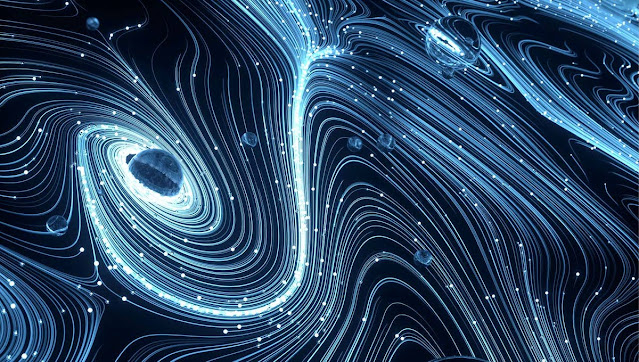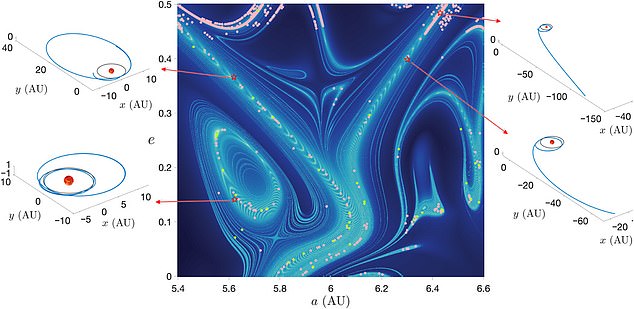Astronomers have identified a network of "space superhighways" built by invisible structures generated by gravitational interactions in the Solar System. These channels allow items in space to travel quickly and can be utilised for human space exploration and comet and asteroids investigation.
Using analyses on both observations and simulation data, a team of researchers led by Nataa Todorovi of Serbia's Belgrade Astronomical Observatory discovered that these superhighways were made up of a series of connected arches in these invisible structures known as cosmic collectors - and each planet generates its own collectors, resulting in what researchers call "a true celestial autobahn."
This is a map of the roadway structures that surround Jupiter, with a focus on the very chaotic structures within the arches.
This network can transport things from Jupiter to Neptune in decades, rather than the hundreds of thousands to millions of years that are often anticipated for the solar system.
Finding hidden structures in space is not always straightforward, but looking at how things move - especially comets and asteroids - might provide important hints.
Scientists claim to have examined data from "millions of orbits in the solar system" in order to determine their interaction. The advantages of such a study will extend beyond the potential acceleration of space travel. Investigating these mechanisms may also aid in the movement and even control of potentially hazardous comets and asteroids.















No comments